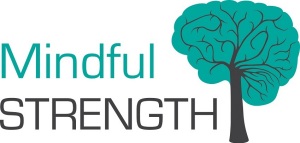https://mindfulstrength.co.uk/wp-content/uploads/2015/06/cropped-MindfulStrength-Colour-web-large-40-pecent-300x143.jpg
0
0
admin
https://mindfulstrength.co.uk/wp-content/uploads/2015/06/cropped-MindfulStrength-Colour-web-large-40-pecent-300x143.jpg
admin2015-06-09 09:04:232016-05-06 17:08:48Defining Strong
https://mindfulstrength.co.uk/wp-content/uploads/2015/06/cropped-MindfulStrength-Colour-web-large-40-pecent-300x143.jpg
0
0
admin
https://mindfulstrength.co.uk/wp-content/uploads/2015/06/cropped-MindfulStrength-Colour-web-large-40-pecent-300x143.jpg
admin2015-06-01 06:13:072016-05-06 17:09:23The importance of Easy Days
https://mindfulstrength.co.uk/wp-content/uploads/2015/06/cropped-MindfulStrength-Colour-web-large-40-pecent-300x143.jpg
0
0
admin
https://mindfulstrength.co.uk/wp-content/uploads/2015/06/cropped-MindfulStrength-Colour-web-large-40-pecent-300x143.jpg
admin2015-05-25 11:14:232016-05-06 17:10:09StrongFirst Level 2 Kettlebell Instructor
https://mindfulstrength.co.uk/wp-content/uploads/2015/06/cropped-MindfulStrength-Colour-web-large-40-pecent-300x143.jpg
0
0
admin
https://mindfulstrength.co.uk/wp-content/uploads/2015/06/cropped-MindfulStrength-Colour-web-large-40-pecent-300x143.jpg
admin2015-05-17 20:20:572016-05-06 17:12:26Confidence and Self-Belief
https://mindfulstrength.co.uk/wp-content/uploads/2015/06/cropped-MindfulStrength-Colour-web-large-40-pecent-300x143.jpg
0
0
admin
https://mindfulstrength.co.uk/wp-content/uploads/2015/06/cropped-MindfulStrength-Colour-web-large-40-pecent-300x143.jpg
admin2015-05-10 20:00:492016-05-06 17:13:07The problem with Smith Machines
https://mindfulstrength.co.uk/wp-content/uploads/2015/06/cropped-MindfulStrength-Colour-web-large-40-pecent-300x143.jpg
0
0
admin
https://mindfulstrength.co.uk/wp-content/uploads/2015/06/cropped-MindfulStrength-Colour-web-large-40-pecent-300x143.jpg
admin2015-05-03 20:00:272016-05-06 17:13:49Toning up, and lifting heavy stuff
Scroll to top





